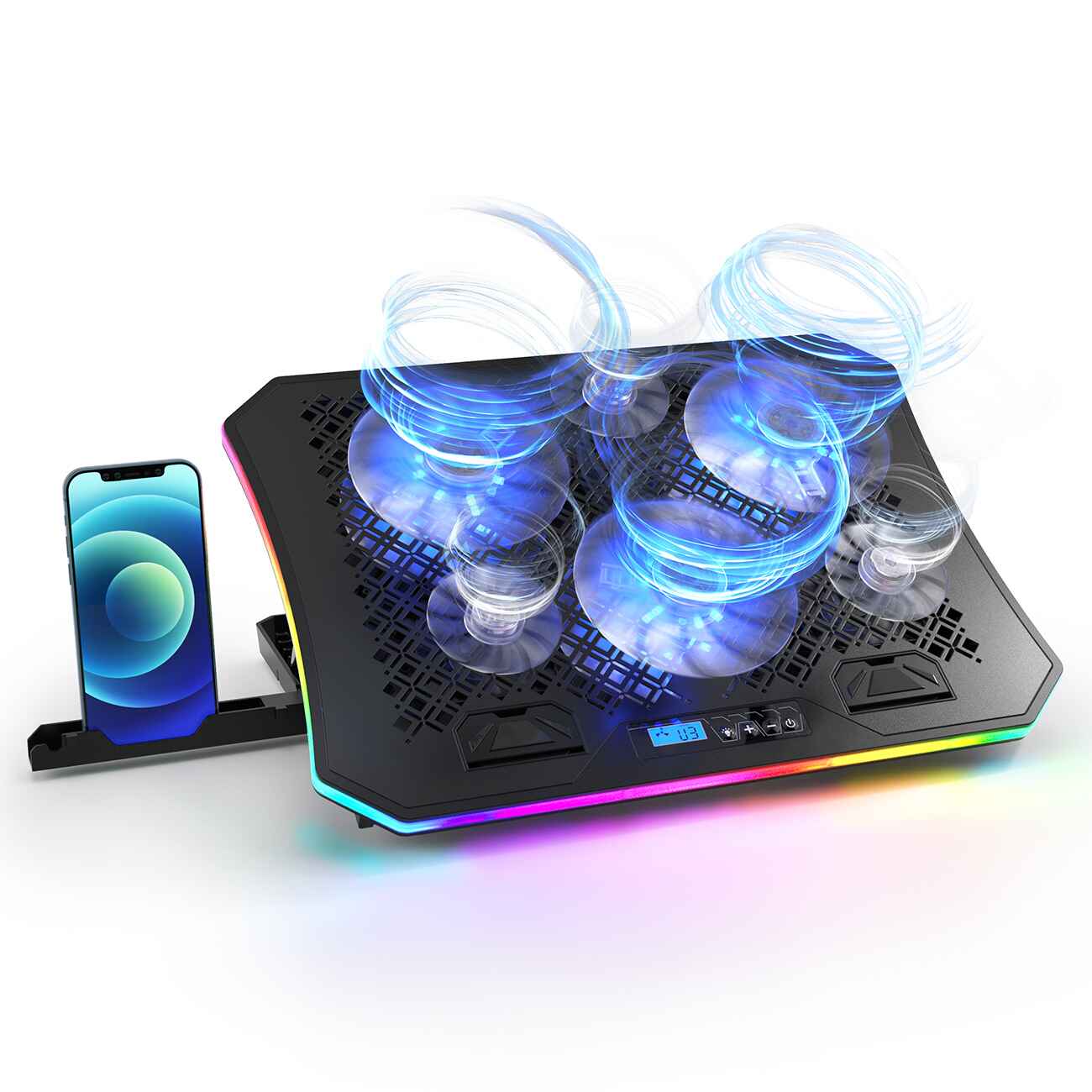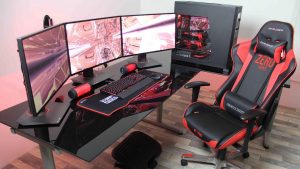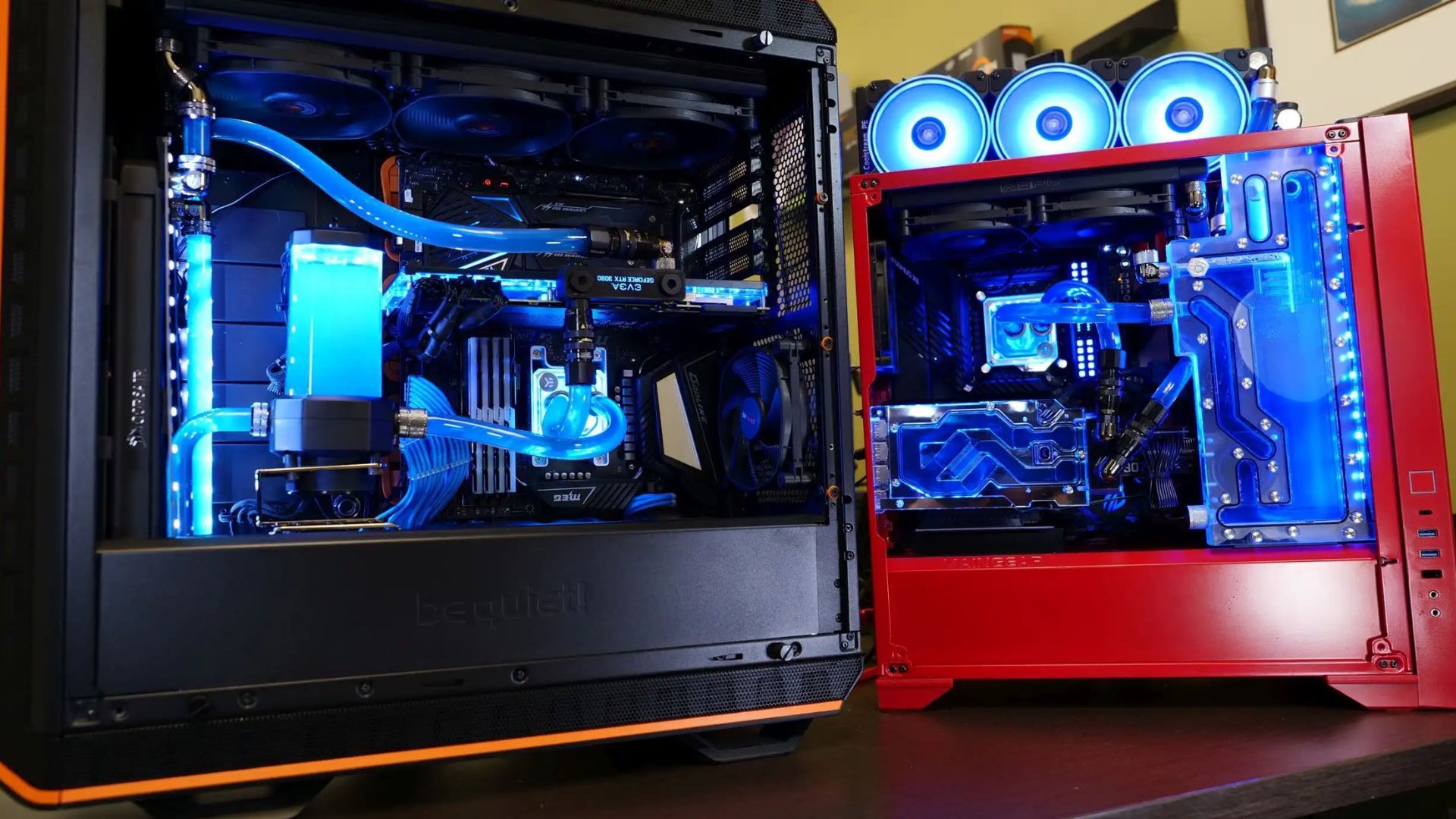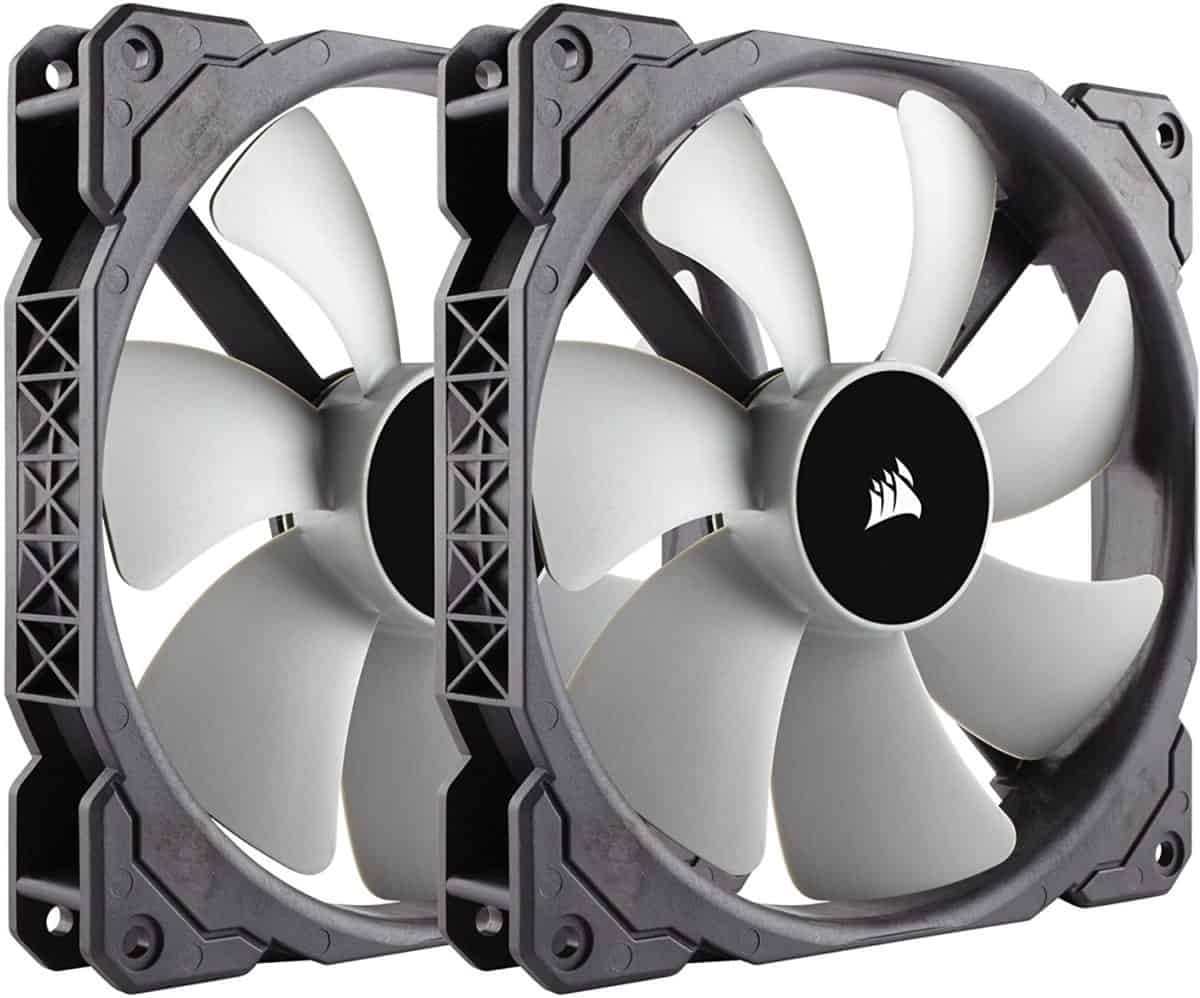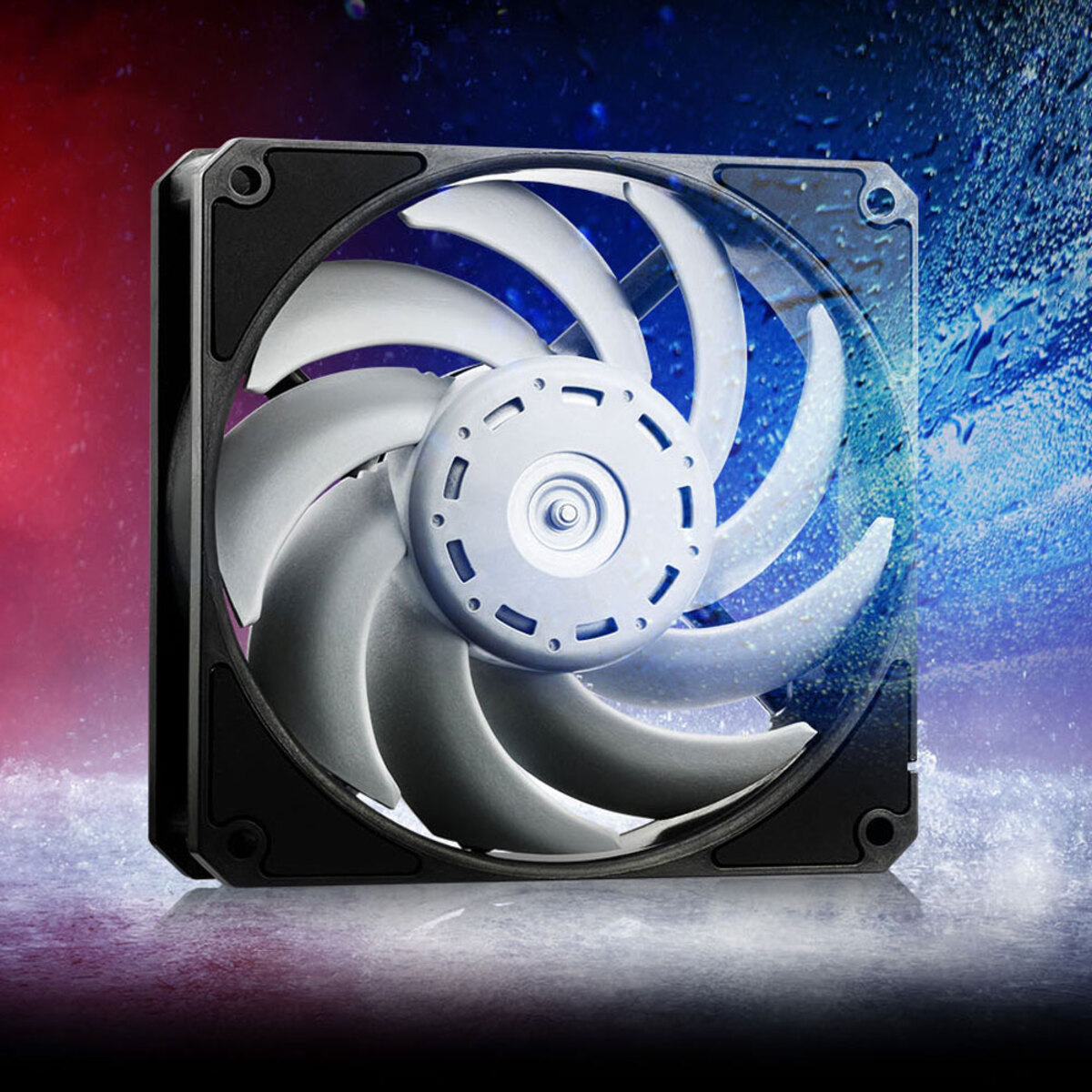Introduction
Choosing the right PC case is essential when building or upgrading a computer. It not only affects the overall aesthetics of your setup but also plays a crucial role in determining the performance and longevity of your system. One of the key considerations when selecting a case is ensuring it can accommodate your power supply adequately. In this article, we will discuss how to determine if a PC case will be big enough for your power supply, taking into account various factors and considerations.
Before delving into the details, it’s important to understand that not all power supplies and computer cases are created equal. They come in different sizes, form factors, and configurations. Therefore, it’s vital to ensure compatibility between the two components to avoid any issues or limitations during the assembly process.
In the following sections, we will explore the factors to consider when assessing whether a PC case will be big enough for your power supply. We will discuss the power supply form factor and dimensions, as well as the computer case form factor and dimensions. Additionally, we will highlight the importance of airflow and cable management in ensuring optimal performance and cooling for your system.
By the end of this article, you will have a clear understanding of the factors to consider and how to determine if a PC case can accommodate your power supply effectively. Let’s dive in and explore the world of PC cases and power supplies.
Factors to consider
When determining whether a PC case will be big enough for your power supply, several factors need to be taken into consideration. These factors include the power supply form factor, power supply dimensions, computer case form factor, and computer case dimensions. Let’s delve into each of these factors in more detail.
The power supply form factor refers to the standardized size and shape of the power supply unit. The most common form factors for power supplies are ATX, Micro-ATX, and Mini-ITX. It is crucial to ensure compatibility between the power supply form factor and the computer case form factor. For instance, if your power supply is ATX form factor, you will need a case that supports ATX power supplies.
Next, you need to consider the power supply dimensions. Power supplies come in various sizes, typically measured in millimeters. The most critical dimensions to look for are the length and width. Measure the length of your power supply and compare it with the maximum supported power supply length of the PC case you are considering. Ensure that the power supply will fit within the designated power supply bay in the case without any space constraints or obstructions.
In addition to the power supply, you also need to assess the computer case form factor. This refers to the standardized size and shape of the computer case. The most common form factors for computer cases are ATX, Micro-ATX, and Mini-ITX. It is essential to match the form factor of your computer case with the motherboard you plan to use. This ensures proper alignment of the components and efficient utilization of available space.
Lastly, consider the computer case dimensions. This includes the dimensions of the case’s height, width, and depth. Measure the dimensions of your computer case and ensure it has sufficient internal space to accommodate your power supply comfortably. Keep in mind that some cases may have specific compartments or cable management systems that require additional space for proper installation.
Before finalizing your decision, make sure to cross-reference the power supply form factor, power supply dimensions, computer case form factor, and computer case dimensions to ensure compatibility between the two. It is equally important to check the specifications of both the power supply and computer case to verify that they are designed to work together seamlessly.
In the next sections, we will explore how to determine the compatibility between the power supply and the case, as well as the importance of proper airflow and cable management in ensuring optimal performance for your system.
Power supply form factor
The power supply form factor refers to the standardized size and shape of the power supply unit. It is essential to consider the power supply form factor when determining if a PC case will be big enough for your power supply. The most common power supply form factors are ATX, Micro-ATX, and Mini-ITX.
ATX is the most widely used power supply form factor. It measures around 150mm in width, 86mm in height, and 140mm – 180mm in depth. ATX power supplies are compatible with ATX computer cases, which are the standard large-sized cases that can accommodate full-sized components.
Micro-ATX power supplies, also known as mATX, are smaller in size compared to ATX power supplies. They measure around 100mm in width, 83mm in height, and 140mm – 160mm in depth. Micro-ATX power supplies are designed for use with Micro-ATX and smaller computer cases, which are more compact in size and often used for budget-friendly or compact builds.
Mini-ITX power supplies are the smallest form factor available and are designed to work specifically with Mini-ITX computer cases. They typically measure around 150mm in width, 40mm – 65mm in height, and 120mm – 160mm in depth. Mini-ITX power supplies are perfect for ultra-compact setups, such as HTPCs (Home Theater PCs) or small form factor gaming systems.
It is crucial to select a PC case that supports the form factor of your power supply. For example, if you have an ATX power supply, you will need to choose a case that can accommodate an ATX power supply. Failure to match the power supply form factor with the case form factor can result in installation difficulties or compatibility issues.
When considering the power supply form factor, also take note of any additional features or specifications that might affect compatibility. Some power supplies may have modular cables, which allow for better cable management and easier installation. However, modular power supplies may require extra space inside the case to store the unused cables. Be sure to factor in these considerations when selecting a PC case that can accommodate your power supply effectively.
By understanding the power supply form factor and selecting a compatible case, you can ensure a smooth and hassle-free installation process while maximizing the performance and longevity of your system.
Power supply dimensions
Aside from the power supply form factor, another crucial consideration when determining if a PC case will be big enough for your power supply is its dimensions. Power supplies come in different sizes, and it’s important to ensure that the case you choose can accommodate the specific dimensions of your power supply. The most critical dimensions to consider are the length and width of the power supply.
The power supply’s length is particularly important as it determines whether it will fit within the designated power supply bay in the case. It is essential to measure the length of your power supply and compare it with the maximum supported power supply length specified by the case manufacturer. Typically, power supplies range from 140mm to 200mm in length, but there may be variations depending on the manufacturer and model.
The width of the power supply is also important to consider, although it generally adheres to a standard width for each form factor. For example, ATX power supplies typically have a width of around 150mm, while Micro-ATX and Mini-ITX power supplies have slightly smaller dimensions. It is rare to find power supplies with widths that deviate significantly from these standard measurements, so compatibility issues are less common in this regard.
It’s worth mentioning that the power supply’s depth is not typically a major concern when determining compatibility with the case. However, it is still important to ensure that the power supply will not obstruct any other components or cables inside the case once installed. Depth measurements can vary depending on the design and features of the power supply, such as fan placement and cable connectors, but they generally fall within a reasonable range for each form factor.
When selecting a PC case, carefully review its specifications to check the maximum supported power supply length. This information is usually provided by the manufacturer and can be found on their website or product documentation. Some cases also have removable drive cages or modular designs that allow for increased flexibility in accommodating longer power supplies.
Furthermore, it’s worth considering any additional components or features in your system that may affect compatibility. For example, if you have a large, high-performance graphics card that occupies extra space in the case, you may need to ensure that the power supply’s cables or connectors do not obstruct its installation or interfere with proper airflow.
By paying close attention to the specific dimensions of your power supply and comparing them with the compatibility specifications of the PC case, you can ensure that it has enough space to accommodate your power supply effectively and facilitate proper installation and airflow throughout the system.
Computer case form factor
When determining if a PC case will be big enough for your power supply, it is essential to consider the computer case form factor. The form factor refers to the standardized size and shape of the case, which determines the compatibility with various components, including the motherboard and power supply.
The most common computer case form factors are ATX, Micro-ATX, and Mini-ITX. Each form factor has its own size specifications and limitations, so it’s crucial to choose a case that aligns with the form factor of your motherboard and power supply.
ATX cases are the standard large-sized cases that can accommodate full-sized ATX motherboards. These cases are typically larger and provide more space for expansion cards, storage drives, and cooling solutions. ATX cases are compatible with both ATX and smaller form factor power supplies.
Micro-ATX cases are more compact than ATX cases, designed specifically for Micro-ATX motherboards. These cases are generally smaller in size and offer fewer expansion slots and drive bays. Micro-ATX cases can support both Micro-ATX power supplies and standard ATX power supplies, depending on their internal layout and design.
Mini-ITX cases are the smallest form factor available, designed for Mini-ITX motherboards. These cases are incredibly compact and space-saving, perfect for small form factor builds or setups with limited space. As Mini-ITX motherboards are smaller, these cases can only accommodate Mini-ITX power supplies.
When selecting a PC case, ensure that you choose one that is compatible with your motherboard’s form factor. For example, if you have an ATX motherboard, you should choose an ATX case that can house the motherboard appropriately and provide sufficient clearance for other components. Similarly, if you have a Micro-ATX or Mini-ITX motherboard, select a case that supports the respective form factor.
Some computer cases also offer support for multiple form factors, allowing flexibility and future upgrades. For instance, certain cases can accommodate both Micro-ATX and Mini-ITX motherboards, providing versatility for different build configurations. Be sure to check the case specifications to ensure compatibility with your desired motherboard and power supply form factors.
Additionally, consider the overall design and layout of the case, including the placement of drive bays, expansion slots, and connectors. This will ensure that all your components are adequately supported and that there is sufficient space for cable management and airflow.
By selecting a PC case that matches the form factor of your motherboard and power supply, you can ensure proper alignment and compatibility between components, facilitating a smoother installation process and a more organized and efficient system.
Computer case dimensions
In addition to the form factor, another important consideration when determining if a PC case will be big enough for your power supply is its dimensions. The dimensions of the case play a crucial role in determining the amount of space available to accommodate components, including the power supply.
Computer case dimensions typically include the height, width, and depth of the case. These measurements determine the overall size and capacity of the case and can vary significantly depending on the specific model and design.
The height of the case refers to its vertical measurement. This dimension determines how much room is available for components to be installed vertically. It is essential to consider the height of the case to ensure that there is enough space to fit your power supply comfortably without any interference with other components, such as the CPU cooler, graphics card, or storage drives.
The width of the case refers to its horizontal measurement. This dimension determines the amount of space available for components to be installed horizontally. It is crucial to consider the width of the case to ensure that there is sufficient clearance for the power supply connectors, cables, and any other components that may require additional room.
The depth of the case refers to its front-to-back measurement. This dimension determines how much space is available for components to be installed from the front of the case to the back. It is important to consider the depth of the case to ensure that the power supply, along with any other components, can fit comfortably within the case without any obstructions or space limitations.
When selecting a PC case, pay attention to the dimensions provided by the manufacturer. Compare the dimensions of the case with the dimensions of your power supply to ensure a proper fit. Take note of any additional features, such as drive cages, fans, or cable management systems, that may impact the available space inside the case. These features may require extra clearance or could affect the placement of the power supply within the case.
Furthermore, consider any future expansion plans or components you may want to add to the system. Room for additional storage drives, cooling solutions, or graphics cards may be necessary, so ensure that the dimensions of the case can accommodate these potential upgrades.
By carefully evaluating the height, width, and depth of the computer case and comparing them with the dimensions of the power supply, you can ensure that there is enough space to properly install and manage your components within the case. This will help to prevent any compatibility issues, ensure proper airflow, and allow for future upgrades and expansion.
Compatibility between power supply and case
To ensure that a PC case will be big enough for your power supply, it’s crucial to assess the compatibility between the two components. Compatibility involves considering various factors, such as the power supply form factor, dimensions, and the specifications of the computer case. Let’s explore the key aspects to consider for a seamless match between your power supply and case.
One of the first steps is to check if the power supply form factor matches the case form factor. Determine whether your power supply is ATX, Micro-ATX, or Mini-ITX, and choose a case that supports that specific form factor. This ensures that the power supply can fit and function correctly within the case.
Next, verify that the power supply dimensions, including the length and width, are compatible with the case specifications. Measure your power supply’s dimensions and compare them with the maximum supported power supply length and width of the case. Ensure that the power supply will fit comfortably without any space constraints or obstructions.
Additionally, consider the placement of the power supply in the case. Some cases feature bottom-mounted power supply bays, while others have top-mounted or even side-mounted configurations. Ensure that the case’s power supply bay matches the orientation of your power supply for proper installation and cable management.
Another critical aspect of compatibility is the availability of power supply connectors. Check if the case has the necessary cutouts or cable management features to route and handle the power supply cables effectively. Confirm that the case provides ample space for cable management, reducing clutter and optimizing airflow within the system.
It’s also vital to determine if the case supports any additional features of your power supply, such as modular cables. Modular power supplies offer the flexibility to customize cable connections, reducing cable clutter. However, ensure that the case has enough space to store any extra cables that are not in use.
Lastly, consider the overall design and layout of the case. Look for features that can further enhance compatibility, such as removable drive cages, adjustable mounting positions, and adequate clearance for components like the CPU cooler or graphics card. These features can help create a more adaptable and accommodating environment for your power supply and other PC components.
By thoroughly evaluating the compatibility between your power supply and case, you can ensure a smooth and successful installation process. This compatibility ensures that the power supply is properly supported, connected, and housed within the case, creating a reliable and efficient system configuration.
Importance of airflow and cable management
When considering whether a PC case will be big enough for your power supply, it’s essential to understand the significance of proper airflow and cable management within the system. Effective airflow management and cable organization play a crucial role in maintaining optimal performance, cooling, and overall system longevity. Let’s explore why these factors are so important.
Airflow is vital for cooling components, especially high-performance ones like the CPU and graphics card. A well-designed case ensures that cool air can enter and hot air can exit efficiently. Adequate space around the power supply allows it to cool down effectively, preventing overheating that can reduce its lifespan or cause stability issues.
Proper airflow also prevents the formation of hotspots within the case. If the power supply is obstructed or cramped, it can generate heat and affect other nearby components. By ensuring adequate space and ventilation, hot air can be expelled efficiently, preventing heat buildup.
Effective cable management is equally important. Properly organized cables not only enhance the aesthetics of the build but also contribute to better airflow. Neatly arranged cables create open pathways for airflow, preventing obstructions and enabling cool air to reach components like the power supply and motherboard.
Improper cable management can hinder airflow, forcing fans to work harder and increasing the overall system temperature. This can lead to reduced cooling efficiency, increased noise levels, and potential performance degradation. Moreover, tangled cables can become a source of interference, affecting signal quality and potentially causing stability issues.
A well-organized cable layout also facilitates easier access to components, making future upgrades, maintenance, and troubleshooting more straightforward. It reduces the risk of accidentally unplugging or damaging cables and allows for better visibility of important connectors and ports.
To achieve effective airflow and cable management, consider cases with built-in cable management features, such as hidden cable routing channels, Velcro straps, or rubber grommets. These features help keep cables organized, reducing clutter and ensuring cables are neatly tucked away from obstructing airflow.
Additionally, consider investing in cable extensions or custom-length cables to eliminate excess cable length that can contribute to cable clutter. This way, you can have precisely measured cables that fit perfectly in your system, optimizing airflow and maximizing cable management possibilities.
By paying attention to airflow management and cable organization, you can maintain optimal temperatures, improve system performance, and prolong the lifespan of components, including the power supply. The result is a cleaner, cooler, and more efficient system that operates reliably and dust-free, contributing to a superior computing experience.
Conclusion
Choosing a PC case that is big enough for your power supply is essential for a successful and efficient computer build or upgrade. It ensures compatibility and proper installation, promoting optimal performance, cooling, and longevity of your system. By considering factors like power supply form factor, dimensions, computer case form factor, and dimensions, you can make an informed decision that will result in a well-matched combination.
Remember to select a PC case that supports the specific form factor of your power supply, be it ATX, Micro-ATX, or Mini-ITX. Measure the dimensions of your power supply and compare them with the maximum supported power supply length and width of the case. Ensure that the case has sufficient space and provided features to accommodate your power supply adequately.
In addition to compatibility, pay attention to the importance of airflow and cable management. Proper airflow helps cool down components, including the power supply, while preventing the formation of hotspots. Effective cable management reduces clutter, enhances airflow, and makes future upgrades and maintenance more straightforward.
By considering these factors and their interplay within your system, you can select a PC case that not only accommodates your power supply but also delivers optimal performance and cooling. The right combination ensures a reliable, efficient, and aesthetically pleasing build that will provide you with a satisfying computing experience.
In conclusion, choosing a PC case that is big enough for your power supply involves careful consideration of the power supply form factor, dimensions, and compatibility with the computer case form factor and dimensions. Balanced airflow and proper cable management further enhance system performance. By adhering to these principles, you can create a well-matched and optimized system configuration that will meet your computing needs for years to come.










